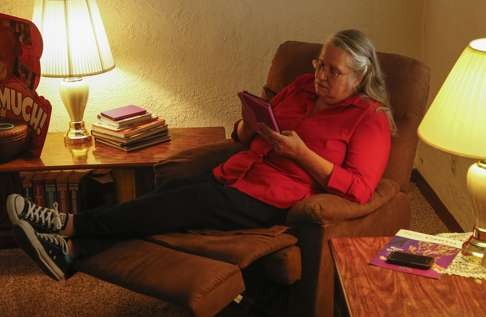
App makers try to cash in on the craze for adult colouring books
Crayon-wielding enthusiasts say they’ll never abandon paper, but the ease of use and creative scope of colouring apps are threatening the growth of colouring book publishers
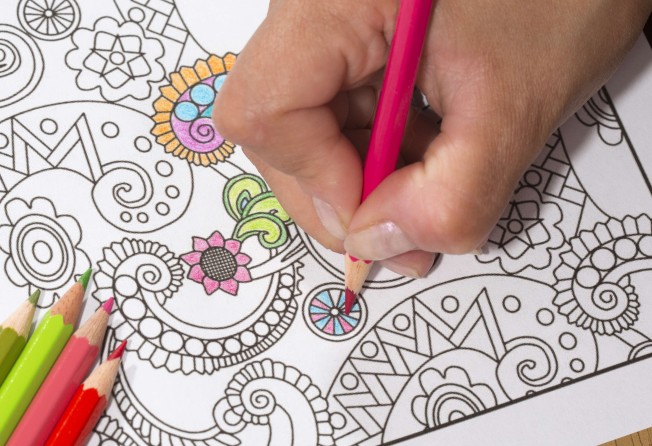
Since she got in on the adult colouring book craze two years ago, Cheri Brown has spent more than US$400 on 50 books holding intricate sketches that she embellishes with marker pens, coloured pencils and gel pens.
But in November, Brown shifted spending to digital products. She paid US$100 for mobile apps including Recolor and Colorfy, which comScore researchers say together reached 2.3 million users in the US in March, less than 10 months after launching.
Brown, who crisscrossed the world as a diver for 30 years, now relaxes at home in the Los Angeles area. Eight hours a day, usually settled in an armchair or curled up in bed, she pecks with her right index finger at an iPad Mini, lighting its screen with the blues, greens and silvers of the sea.
Brown, 63, even plans to pay upward of US$700 for a stylus and an iPad Pro. It stores more artwork, boasts a bigger screen and offers greater precision.
“If I had US$100 to spend on colouring, I’d be more likely to buy into a really good app than buy colouring books,” she said. “You see where my purchases are starting to go.”

The rise of colouring apps threatens the enormous growth of colouring book publishers, who sold 12 million adult and children’s colouring books in the US last year – 1,100 per cent more than in 2014, according to tracking firm Nielsen.
Colouring book enthusiasts insist they’d never abandon the pad and paper. But the concern is that, like Brown, people will become accustomed to the on-demand, dynamic enchantment of apps and ditch the old medium. That’s what has happened as other throwback trends enjoying revivals – for instance, young adults subscribe to Netflix, not cable television, to watch Nickelodeon shows from their past.
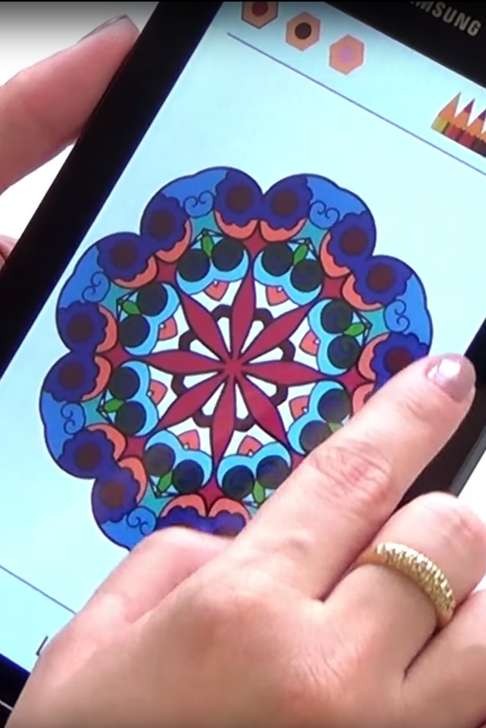
The issue reflects a spreading realisation: it’s dangerous for companies entrenched in making physical products or selling goods at bricks-and-mortar shops to not fight for online spending – and vice versa.
That explains why popular publisher Blue Star Coloring has found a partner to develop a colouring app, why film studios are hawking apps filled with games and extra content, why rumours suggest online retail giant Amazon.com plans to open hundreds of bookstores and why many online shopping start-ups now rent mall space.
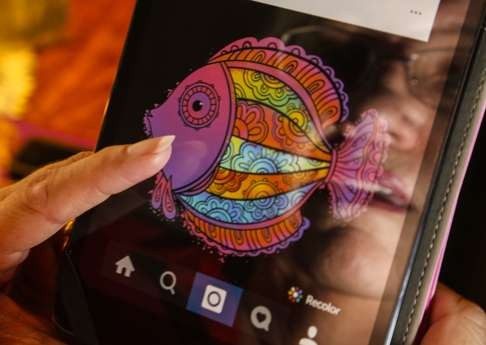
The colourist community is falling in line.
“There is a place for physical books,” says Ilkka Teppo, 40, chief executive and founder of Sumoing, the Helsinki, Finland, start-up behind Recolor. “You can much more easily try colour combinations and styles on digital, and when you have more time, you can have the experience on print.”
Business strategists agree books and apps can coexist. But it’s not certain that every industry searching for physical-digital harmonies can escape the decline that Napster, iTunes and Spotify caused music companies.
“They can have a happy medium,” says Elizabeth Spaulding, leader of management consulting firm Bain’s digital practice. But “simply waiting for it to play out is not a good answer. Figuring out trends that could displace their business is what matters”.
With colouring books, Brown’s move to digital offers one prediction of the future.
A friend’s Facebook post about colouring apps and the tediousness of books inspired her digital transition. Brown carried a big tote with pencils and books when taking her infirm mother on long visits to the doctor. Now, she slips the iPad into her handbag.
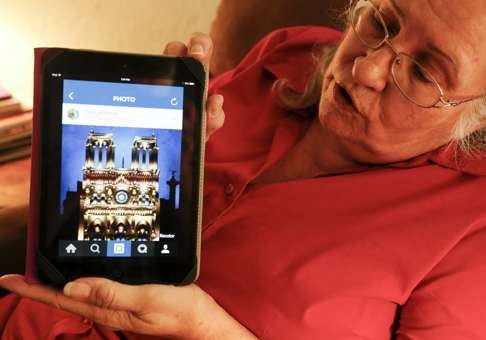
Colouring a physical page takes days. So she’s coloured only 150 pages versus 300 digital creations in one third of the time. She colours three insect sketches during a doctor’s appointment, mainly because elements like shading are instantaneous through the digital medium.
“With a touch of a finger, you’ve got it perfectly done – polished and smooth,” she says.
After trying 20 of the 450 colouring apps, she settled on Recolor, paying a US$40 annual subscription. It’s best, she says, because you can erase by touch, quickly access recently used colours and colour virtual 3D objects. She expects Recolor to add better effects, which can make a drawing look like it’s on canvas or other materials.
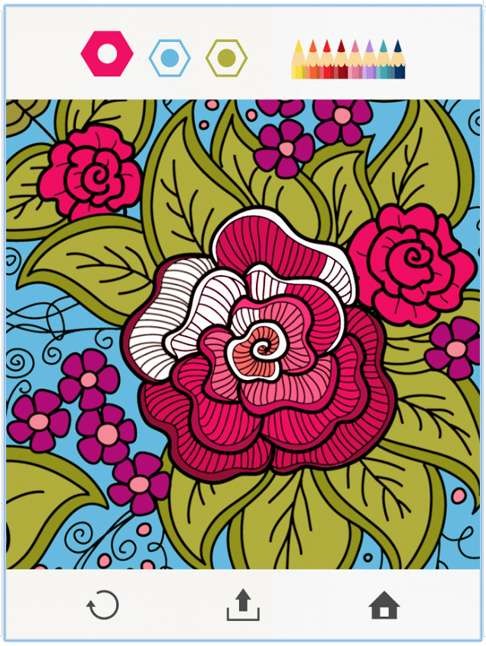
Pens and crayons cost hundreds of dollars. She spends less these days, occasionally splurging on US 99 cent add-ons from third-party apps such as Lumiere that animate Recolor drawings: say putting shooting stars on an evening landscape.
Brown hasn’t ditched books; she recently bought five because she wants to finish her colouring supplies. But she’ll use her iPad camera to scan most pages into Recolor for digital alteration instead.
Showcasing her best digital work is possible, too. She ordered a 0.6 x 0.6-metre print of her colouring of Notre-Dame Cathedral in Paris.
“Almost looks like a photograph,” she says.
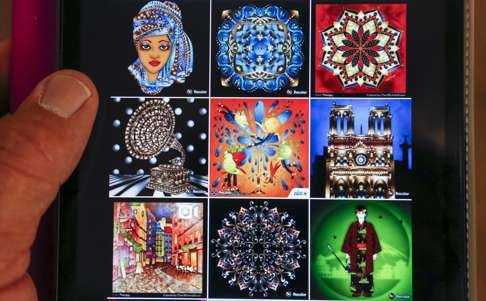
Debra Matsumoto, a spokeswoman for Laurence King Publishing, which has sold 16 million art books since 2013, acknowledges heightened competition hurts sales. But the firm anticipates an enduring, sizeable audience that “purposely seeks a non-digital experience”, Matsumoto says.
Count among them Shelly Durham, who runs the website Adult Coloring Book Reviews.
“Using a colouring app and saying you created art is like putting a TV dinner in the microwave and saying you cooked,” she says. “They will never be the same.”
Laurence King is out to prove it. One new book has gum binding for easy tearing and framing of pages. Another is a flipbook-style story, and a third has an accordion-like layout that unfolds to 4.5 metres.
Apps maintain separate tactics to outlast – and buoy – books. Recolor is talking to publishers, advertisers and entertainment giants about constantly introducing the latest hot characters and themes into its app since digital roll-outs can be fast.
“There will be major synergistic deals cut between intellectual property holders, booksellers and app vendors over the next 12 months,” Teppo says.
Recolor recently raised an undisclosed amount for the non-profit World Wildlife Fund by selling a pack of 10 animal drawings for US$2.99. It also promoted the band Wolfmother by offering free album cover art for colouring.
Teppo declines to reveal its sales figures, but data suggests business is good. In April, Recolor added more than two million users and hosted 30 million colouring sessions. About 3 per cent of users subscribe, generating five US cents in revenue per daily user, comparable to casual mobile games. Colorfy, the largest player in colouring apps, has five times as many users, according to estimates from tracking firm Sensor Tower.
Commissioning an illustration costs about US$80 on average. Two launch every day, though partnerships could accelerate the pace tenfold.
Teppo’s six-man team pursued Recolor almost a year ago after realising three of them had wives hooked on colouring books. Smartphones, where tapping to insert a swatch of colour could replace scribbling between lines, promised to make the art form easier. They launched in August.
About 80 per cent of users are women or children. Women tend to love puzzle games such as Candy Crush, but colouring provides the satisfaction of creation, Teppo says.
Others describe colouring as a way to relieve stress. That’s partially the case with Brown. But entertainment is key, because she lacks options as a housebound caregiver.
She’s forged friendships with app-colourists from Japan to Poland she discovered on the popular image-sharing app Instagram. But Brown avoids the “condescending” book-only colourists, she says.
“You’ll always have artists that think the only way to be an artist is to pull out their colouring set,” she says. “My heart is in the digital end of things.”
Tribune News Service